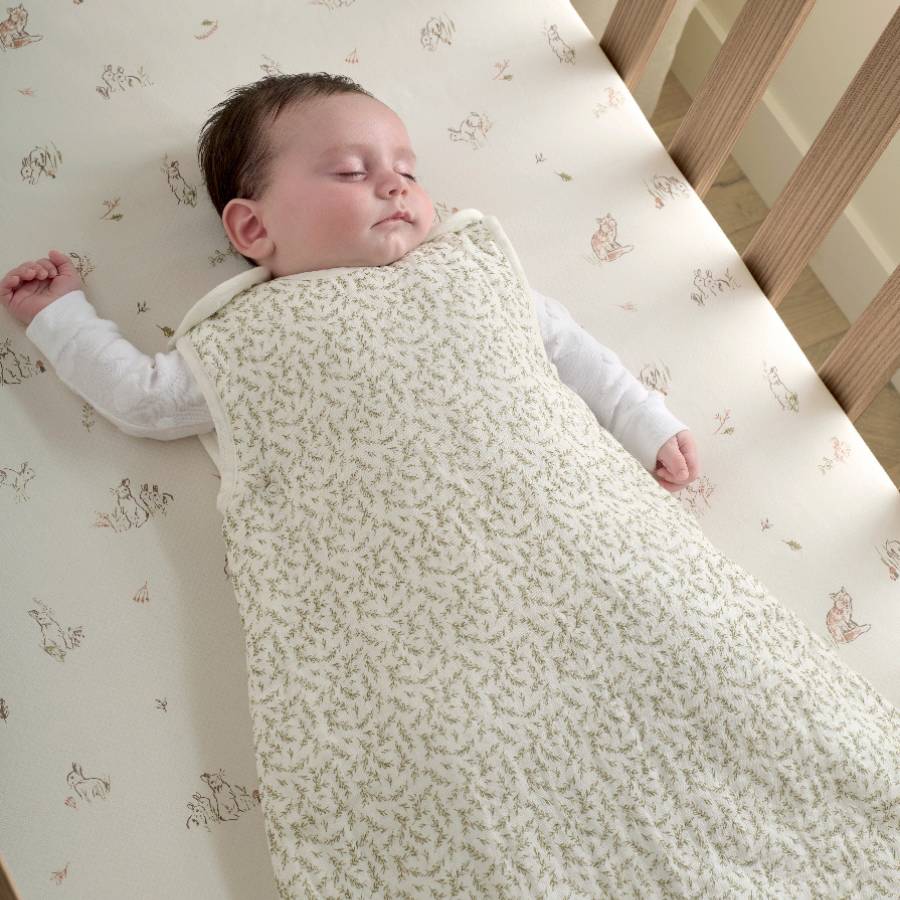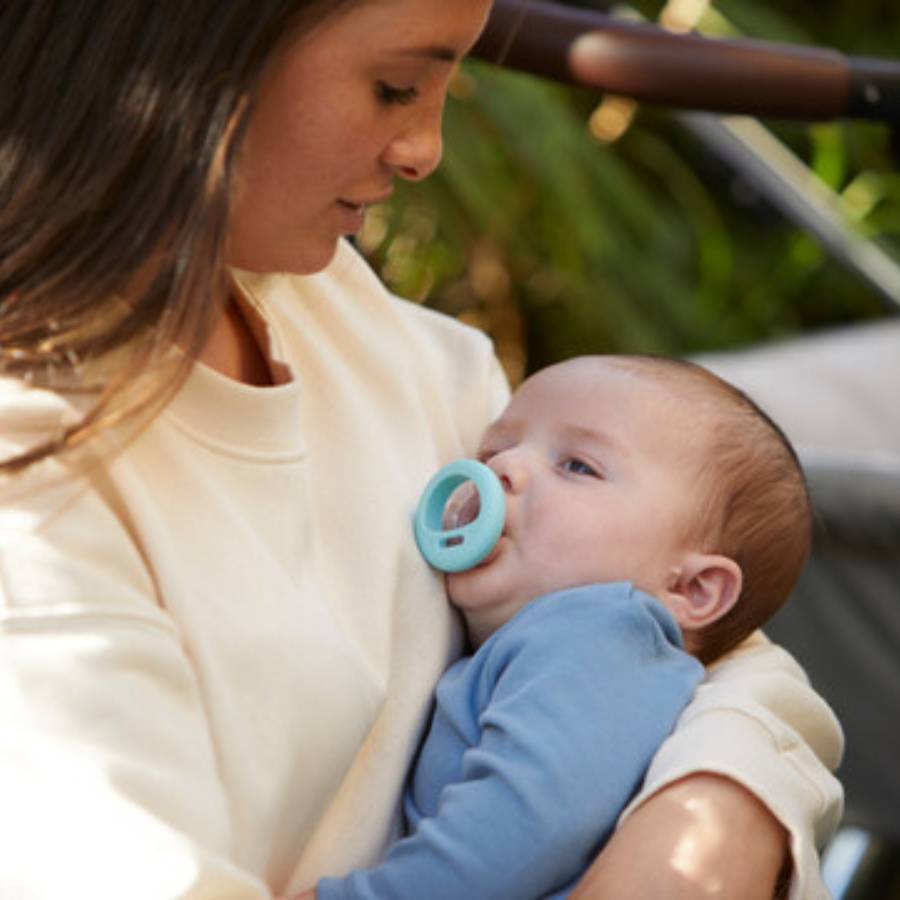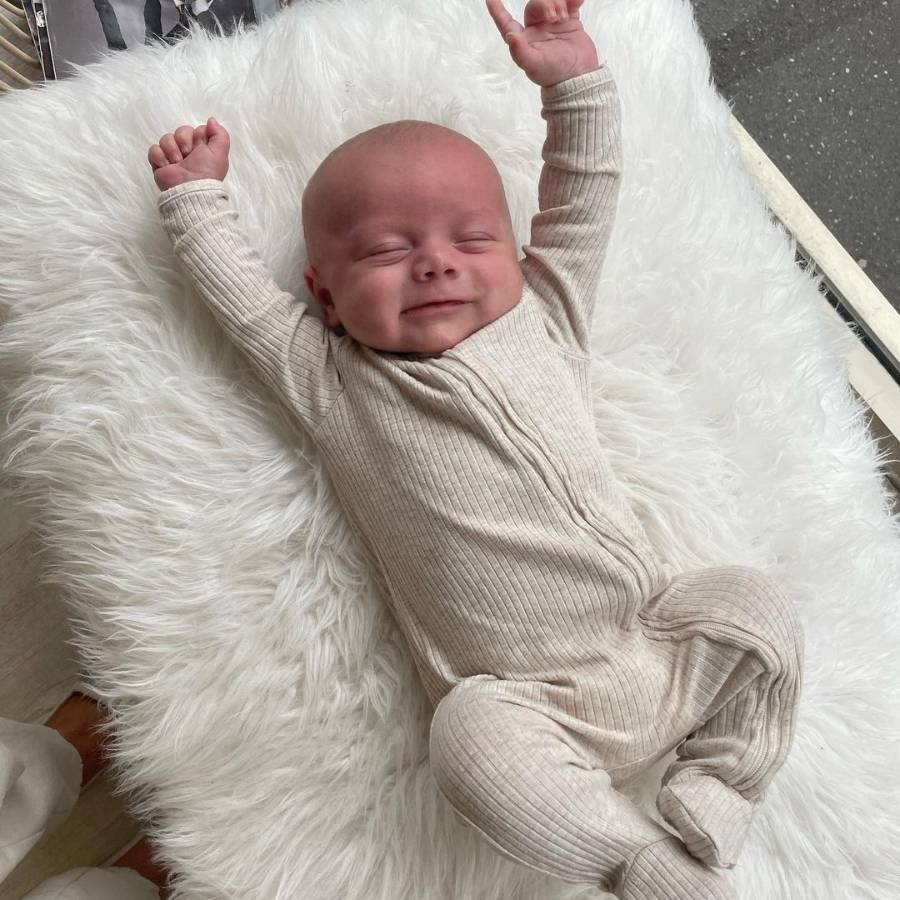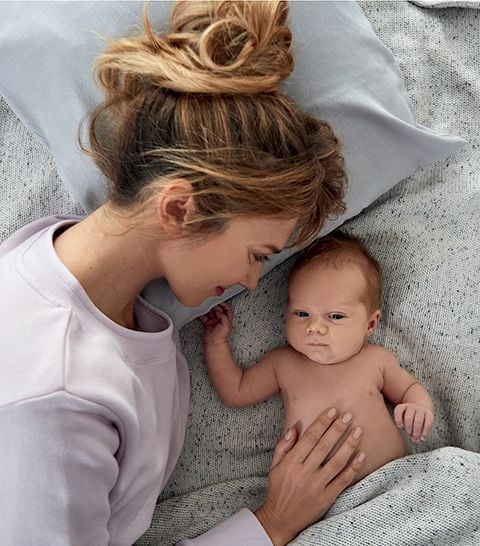
What is the normal infant temperature?
A newborn's normal body temperature typically ranges between 36.1°C to 37.9°C when measured rectally. However, variations in temperature can occur depending on factors such as the baby's age, activity level, and environment. It's important for parents to familiarize themselves with their baby's typical temperature range and monitor for any deviations. Regularly checking your baby's temperature can help you detect fever or overheating early on, allowing for timely intervention if necessary.

Signs your baby is too hot
-
Excessive Sweating: While it's normal for babies to sweat, excessive sweating, especially when they're not exerting themselves, can be a sign of overheating. Pay attention to dampness on their back, chest, or head.
-
Flushed Skin: Take note if your baby's skin appears flushed or red, particularly on their face. This could indicate that they're feeling too hot.
-
Rapid Breathing: When babies are overheated, their bodies may try to regulate their temperature by increasing their breathing rate. If you notice your baby breathing rapidly, it could be a sign of overheating.
-
Irritability and Restlessness: Babies who are too hot may become fussy, irritable, or have trouble settling down. If your little one seems unusually agitated, consider if they might be feeling overheated.
-
Heat Rash: Keep an eye out for small, red bumps on your baby's skin, particularly in areas where sweat accumulates, such as the neck, chest, or diaper area. Heat rash can develop when sweat glands become blocked, leading to irritation.
-
Warm to the Touch: Touch your baby's skin to see if it feels excessively warm or hot. Feeling overheated to the touch is a clear sign that your baby may need to cool down.

Why do babies overheat easily?
Several factors contribute to why babies overheat easily.
- Newborns have a higher surface area-to-body weight ratio than adults, which means they can absorb heat more quickly.
- Babies have limited ability to regulate their body temperature through mechanisms like sweating. Their sweat glands are not fully developed, making it harder for them to cool down efficiently.
- Newborns have immature central nervous systems, which can impact their ability to respond to changes in temperature effectively.

How to keep your baby cool?
Now that you know the signs of overheating, let's explore some tips to help keep your baby comfortable and cool:
-
Dress Appropriately: Choose lightweight, breathable clothing for your baby, such as cotton, especially during warmer weather.
-
Maintain a Comfortable Environment: Keep your home at a comfortable temperature, ideally between 20°C to 22°C. Use fans or air conditioning to help regulate the temperature.
-
Avoid Overbundling: Resist the temptation to overdress your baby, particularly when they're sleeping. Use lightweight blankets or sleep sacks instead of heavy bedding.
-
Offer Fluids: If your baby is old enough to drink water, offer small amounts to help keep them hydrated, especially in hot weather.
-
Stay in the Shade: When outdoors, seek shade to protect your baby from direct sunlight, and use lightweight hats to shield their face.
-
Monitor Room Temperature: Use a room thermometer to keep track of the temperature in your baby's room, especially during naptime and bedtime.
-
Regular Skin Checks: Take regular breaks to check your baby's skin temperature, particularly during warmer days or in heated environments.

How to differentiate between overheating and fever in newborns?
Differentiating between fever and overheating in a newborn is crucial for parents to ensure appropriate care. While both conditions can lead to elevated body temperatures, they have distinct causes and accompanying symptoms. Fever typically results from an underlying illness or infection, and it is often accompanied by other signs such as lethargy, irritability, poor feeding, and a rapid heartbeat. On the other hand, overheating is often caused by environmental factors such as excessive bundling or a hot room temperature. Signs of overheating include flushed skin, excessive sweating, rapid breathing, and general discomfort.

What are the risks of overheating?
The risks of overheating for a baby are significant and should not be underestimated by parents. When a baby's body temperature rises above normal levels, it can lead to a range of health concerns. One primary risk is dehydration, as overheating can cause excessive sweating and fluid loss, especially in hot environments. Additionally, overheating may disrupt a baby's sleep patterns, leading to irritability and restlessness. Prolonged exposure to high temperatures can also increase the risk of heat rash, a condition characterized by red, irritated skin.

Being able to recognize the signs of overheating in your baby is crucial for their well-being. By staying vigilant and taking proactive steps to keep them cool and comfortable, you can help ensure a happy and healthy environment for your little one. Remember, paying attention to your baby's cues and adjusting their clothing and surroundings accordingly is key. With these tips , you can confidently navigate the challenges of keeping your baby comfortable in any weather.
Don't forget to check out our range of baby clothing and nursery essentials designed to keep your little one cozy without overheating. Remember, a comfortable baby is a happy baby!
- Pregnancy: Learn about preparing for your baby's arrival.
- Baby: Explore tips and advice for caring for your newborn.
- Toddler: Discover helpful resources for navigating the toddler years.
- Parents: Find support and guidance for new parents.
- Nursery Design: Get inspiration for creating the perfect nursery for your baby.
- Sleep: Learn about promoting healthy sleep habits for your little one.









